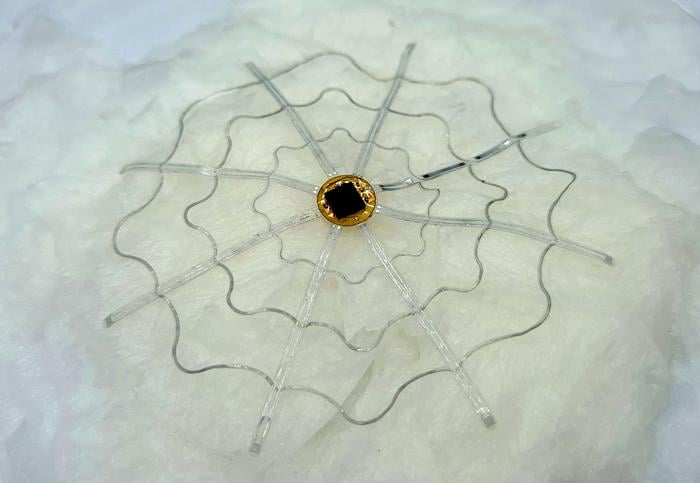Researchers at Seoul National University have developed a revolutionary device that could transform how we diagnose brain disorders. Their “biodegradable electronic tent” promises to deliver the benefits of large-area brain monitoring without the risks of traditional open-skull surgery.
A Tiny Solution to a Big Problem
Brain disorders like epilepsy and Parkinson’s disease often require extensive monitoring of electrical activity across the brain’s surface. Current methods involve removing a large portion of the skull to place electrodes directly on the brain. This invasive approach carries serious risks, including brain hemorrhage, infection, and dangerous post-operative complications.
The new technology, detailed in a study published August 5th in Nature Electronics, offers a dramatically less invasive alternative. Using a needle-thin probe, doctors could insert a folded electronic device through a tiny hole in the skull. Once inside, this “tent” unfolds to cover an area the size of a palm, all within the narrow space between the brain and skull.
Professor Seung-kyun Kang, who led the research team, explained the motivation behind their work: “Few people would be willing to undergo surgery to implant a brain chip, as recently demonstrated in clinical trials by Neuralink, the neuroscience startup founded by Elon Musk, CEO of Tesla. To implant a brain-computer interface (BCI) device, a dangerous surgery is required to remove part of the skull and insert an electronic chip.”
Clever Design Meets Cutting-Edge Materials
The key to this breakthrough lies in the clever use of materials. The team combined biodegradable shape-memory polymers with ultra-thin, biodegradable electronic components. This allows the device to be compacted for insertion, then expand to its full size once in place.
Crucially, the entire device naturally breaks down in the body after it’s no longer needed. This eliminates the need for a second surgery to remove the implant, further reducing risks to patients.
In animal trials, the researchers successfully recorded brain activity for two weeks after insertion. They also monitored the gradual breakdown of the device over time, confirming its safety for potential human use.
Dr. Jae-Young Bae, one of the study’s lead authors, highlighted the broad potential of their work: “This technology is also expected to be applicable in diagnosing other brain conditions such as stroke and hydrocephalus. In addition to its applications in diagnosis and treatment, it could also reduce public aversion to the traditional electrode insertion methods used in brain-computer interface (BCI) technologies.”
Why it matters: Brain disorders affect millions of people worldwide, and accurate diagnosis often requires detailed monitoring of brain activity. This new technology could make these crucial diagnostic procedures far less risky and more accessible to patients who might otherwise avoid them due to fears about invasive surgery.
The development of this biodegradable electronic tent raises several important questions for future research:
1. How long can the device remain functional before degrading?
2. Can the technology be adapted for long-term implantation in treatments that require ongoing brain monitoring?
3. What are the potential applications beyond epilepsy and Parkinson’s disease?
As research continues, we may see this technology adapted for an even wider range of neurological conditions. The team’s work could also accelerate the development of less invasive brain-computer interfaces, potentially bringing sci-fi concepts like direct neural control of devices closer to reality.
Professor Kang’s team is already looking ahead to potential clinical trials in humans. If successful, this needle-thin probe could revolutionize how we diagnose and treat a wide range of neurological disorders, offering hope to millions of patients worldwide.
The biodegradable electronic tent represents a significant step forward in minimally invasive neurotechnology. By addressing the risks associated with traditional brain implants, it could pave the way for more widespread adoption of advanced diagnostic and therapeutic tools in neurology. As this field continues to evolve, we may see a future where precise brain monitoring becomes as routine and low-risk as a standard blood test.


